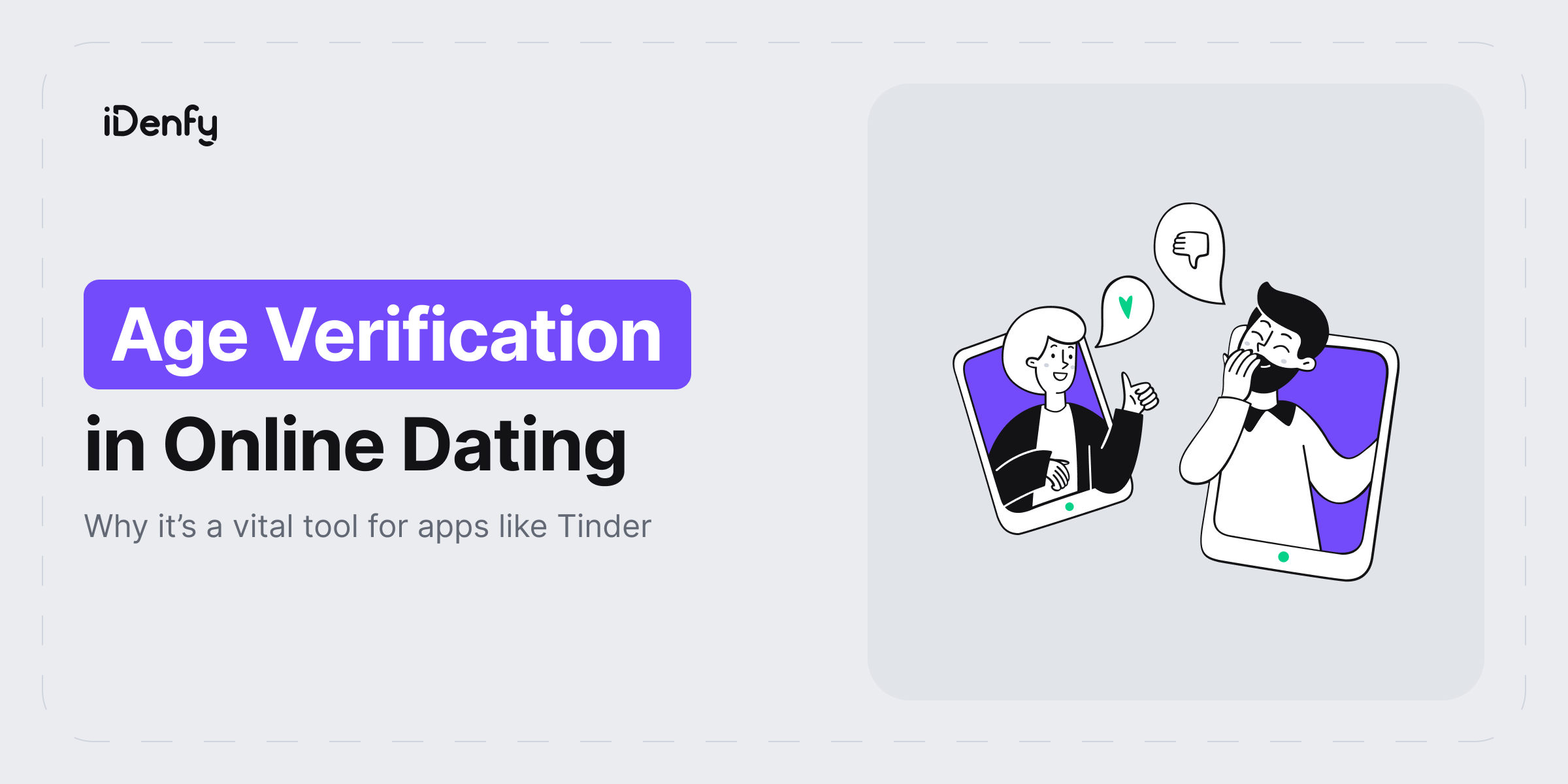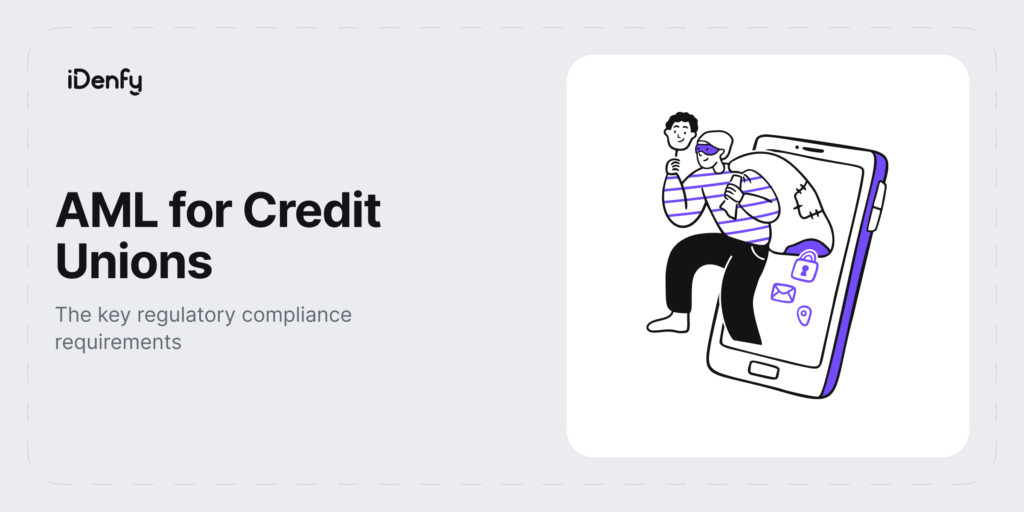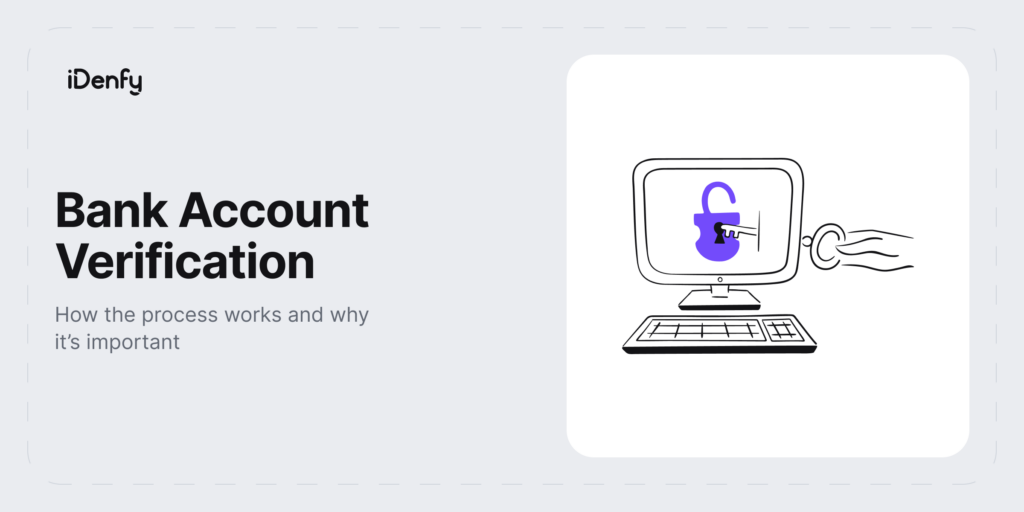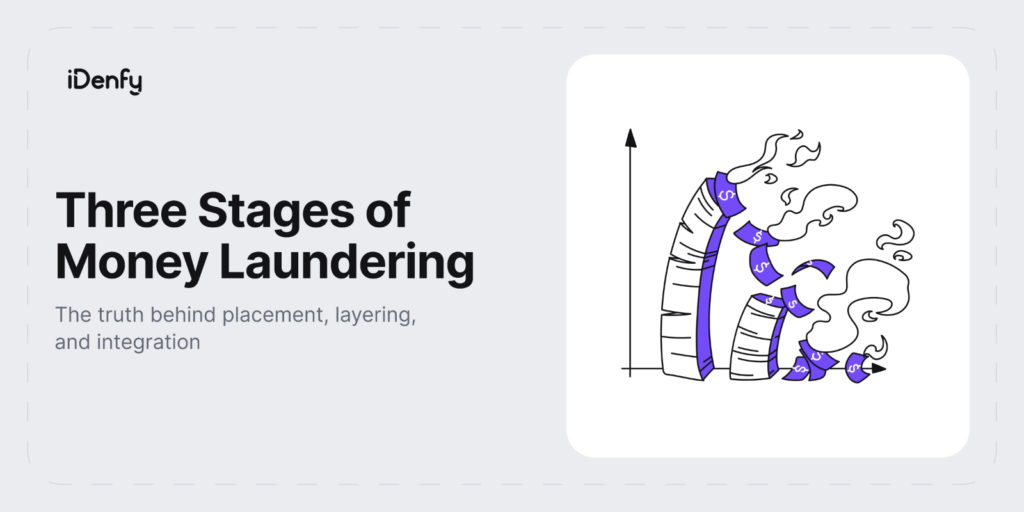The younger generation doesn’t remember their lives without smartphones. The digital lifestyle has become not a privilege but an absolute necessity, and with that, all sorts of applications are continuing to be created globally. This includes dating apps and online dating in general, which have also become a part of a daily routine for singles around the world.
Statista reports that in 2022, 57.44 million people in the United States used online dating services, which means that at least 30% of adults had used them at some point. However, while this sounds like fun and games, the dating scene has its own risks. The Tinder Swindler stories have changed the narrative, pinpointing dangers like romance scams. But that’s not all. Regulators are now talking about more stringent age verification requirements for minors online; this includes both social media apps and dating platforms.
With new requirements to protect minors from age-restricted content, dating apps are implementing new measures to prevent easy access to their services. The already established standard in the online dating industry is asking users to upload a photo of their government-issued ID document and record a video selfie.
This way, online dating platforms match the ID with the profile, both confirming the identity and verifying that the person is at least 18. But what else is there to know? We explore the pros and cons of age verification requirements in online dating while digging deeper into this industry’s risks.
How Do Dating Apps Conduct the Age Verification Process?
A typical age verification process on a dating app includes a selfie and a document photo. That means the user is asked to upload a photo of their ID document and capture a video selfie. Dating apps can choose one method or combine both methods of verification.
It’s powered by facial recognition software that confirms that the user is a real person and that their personal details match their profile photos. Additionally, dating apps offer a verification badge that allows other users to see that you have confirmed your identity and age.
In general, age verification for online dating serves two purposes:
- It follows laws that enforce age limits for certain age-restricted industries, including social media and dating apps.
- It acts as a way to protect young people from age-inappropriate and harmful experiences, which can be linked to romance scams, for example.
Why Should the Online Dating Industry Care About Age Verification?
Many industries fight with fake accounts and bots on the internet. Dating apps aren’t any different in that sense. Age verification measures in online dating can act both as a precautionary measure to prevent underage users and those who create fraudulent profiles. Duplicates and other promotional accounts that want to gain followers on other social media sites like Instagram use fake attractive photos on dating apps to fool others looking for meaningful connections online.
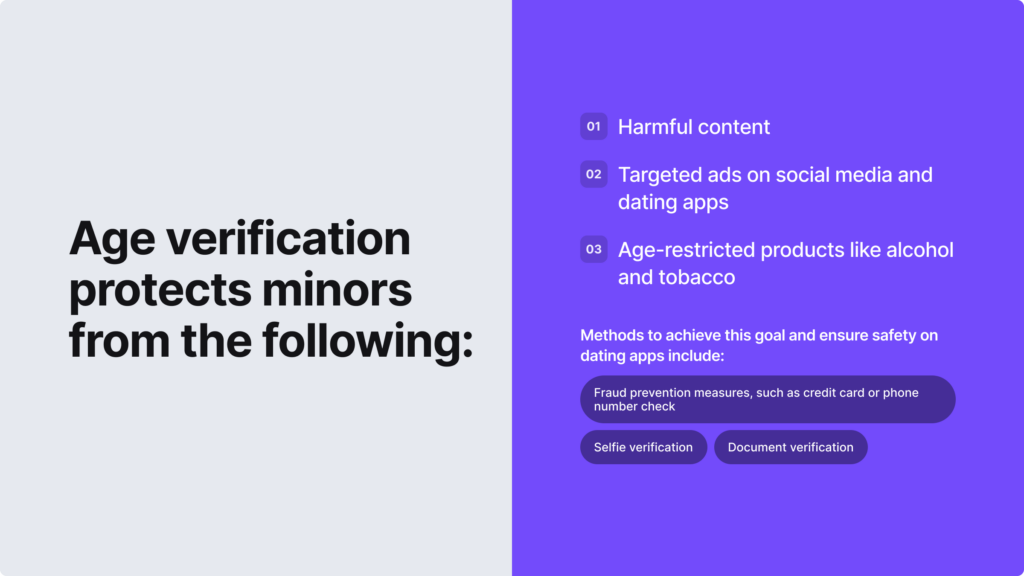
The online dating industry uses age verification for a few important reasons. For example, to:
- Minimize chances of exploitation and inappropriate interactions, such as sponsoring sugar babies that are actually underage.
- Prevent minors from accessing adult platforms altogether, especially since many dating apps are strictly built for adults.
- Reduce the risk of catfishing and other policy-breaking activities, such as bots, duplicate accounts, or users seeking financial gain.
- Comply with age verification requirements, as this is an important factor for dating apps to maintain operating licenses and avoid legal penalties.
What are the Key Safety Issues for Dating App Users?
While dating apps are on the hunt for better and more effective age verification methods, there are loopholes in the system. What’s more, some dating sites use age gates or a standard checkbox asking users to confirm that they’re over 18. This doesn’t create the safest online environment for young people since many bypass this system and access content that isn’t suitable for minors.
For example, Meta has changed its algorithms on Facebook and Instagram to ensure minors are not shown dangerous content, such as self-harm material. However, dating apps don’t have this option since the users have to verify their age during the onboarding process. This makes age verification one of the main steps to ensure security since online dating is known for its overly sexual or pornographic comments, images, and videos.
Other dangers that have put a negative shadow on the online dating industry are:
🔴 Romance Scams
When a fraudster creates a fake persona online and acts as if they have a romantic interest in another person online means they’re conducting a romance scam. Typically, these types of scams happen on dating apps when the bad actor builds trust with the victim and uses manipulation tactics to receive money. In general, romance scams are also popular on forums or any social media sites.
Scammers often target vulnerable people like older women or women who have gone through a breakup. These individuals are more likely to quickly fall into a fake romantic relationship that the scammer makes them believe is real.
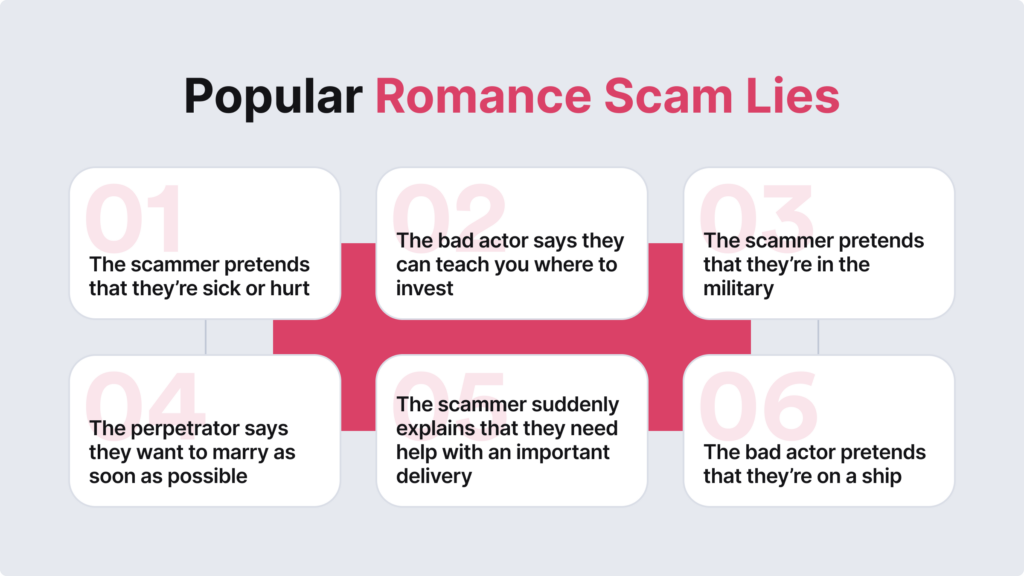
There are signs that potentially show the person on a dating app is a fraudster. For example:
- The person on the app wants to move the chat elsewhere, for example, from Tinder to WhatsApp.
- The person is giving you all the attention in the world. They flaunt you with emails, texts, phone calls, etc.
- They ask for financial help or frequently mention money problems, pushing you to offer help in this department.
- They try to establish a bond quickly, using sweet nicknames or claiming they’ve never felt this way.
- They ask many personal questions, often too early in the relationship, while avoiding answering similar questions themselves.
- They ask for financial help, claiming something unusual has come up. For example, they’ve ended up in jail, hoping you’ll offer assistance.
A perfect illustration of such a notorious act is the Tinder Swindler, who had made its cinematic debut on a Netflix show that explained the story of a convicted fraudster who used dating apps to meet women. He then established lines of credit and loans in their names, ultimately leaving them in thousands worth of debt.
🔴 Human Trafficking
According to the Federal Bureau of Investigation, trafficking on dating apps is a bigger issue than most people realize. In the past, the FBI has warned dating app users that human sex traffickers are using dating apps to target vulnerable individuals, including children, which is still an issue since some dating apps don’t use proper age verification measures.
With the rise of dating apps and other adult-oriented social networking and content creation sites, criminals have expanded their activities, exploiting both women and men for disturbing criminal acts. Some argue that this is also due to the whole industry being too “mainstream” or “normal” with sugar baby trends that can only sometimes promise luxury and glamor and end up putting people at greater risk.
🔴 Identity Theft
Like with anything you put up online, scammers can steal personal data that a user shared on their dating app profile. Identity theft on the internet is a common crime that is dangerous because it often results in major emotional and financial damages for the victim. Scammers typically use stolen details to create fake profiles, catfish other users, or worse, commit financial crimes, like taking out a loan in another person’s name or manipulating the victim into transferring funds to them for an “emergency,” for example.
Here are some tips for users to prevent identity theft on dating apps:
- Avoid sharing excessive personal information in your dating profile or with someone you’ve only chatted with online. Scammers can use details such as your last name or workplace to manipulate you or commit identity theft.
- Do not respond to requests for financial help, especially if they involve sending money overseas or via wire transfer.
- Stick to reputable dating sites and use their messaging services for communication.
- Report suspicious users to the dating app immediately.
Dating apps are great channels for identity theft since users tend to overshare sensitive information, especially when feelings are involved. Scammers then exploit this data to create new, convincing profiles. Without age verification, bad actors can target minors.
Related: How to Check if Someone Is Using Your Identity?
What are the Basic Types of Age Verification in Online Dating?
Age verification isn’t just only about uploading a government-issued ID document, as there are other ways to confirm a user’s age. Some dating app users fear that this method can lead to identity theft in case of a data breach. However, compliance specialists and regulators around the world argue that this type of age verification is necessary. Industries like fintech, crypto, or iGaming have been using this technology successfully throughout recent years.
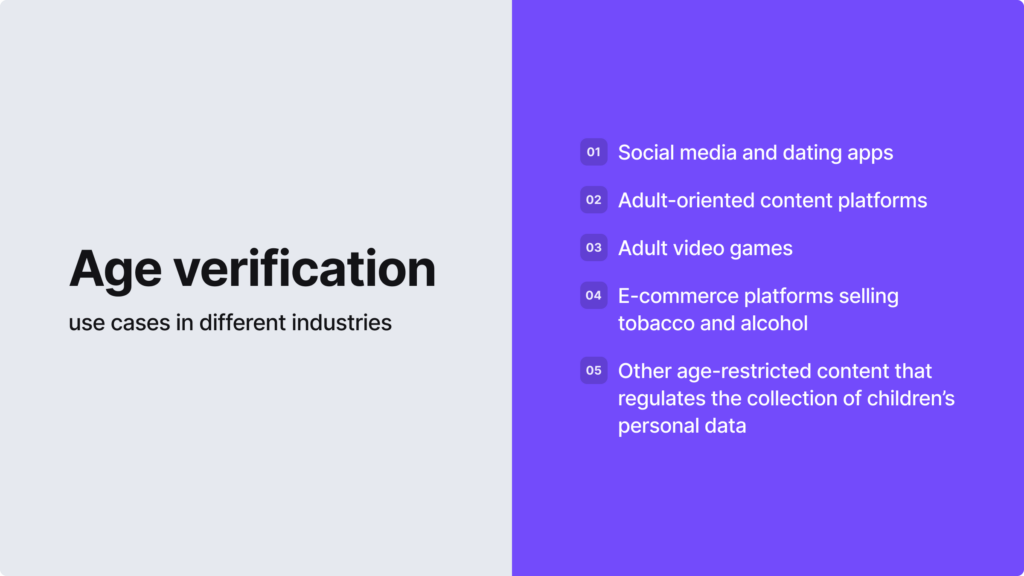
For dating apps, sharing this type of personal information is necessary to ensure that all users on the network are of age and their messages are genuine. This gives the needed peace of mind in a sometimes rather sensitive sphere when it comes to romance.
That said, other simple methods for verifying a person’s age in online dating include:
1. Credit Card Check
In banking, a credit card is used to determine if the customer using the card is its rightful owner. Dating apps use this method similarly — as a way to verify a user’s age. Once they submit their credit card information, the system then checks it against a database, such as a credit bureau. People who aren’t over the age of 18 often don’t have the right to own credit cards, which makes it a suitable age verification method for a dating app.
2. Age Estimation
This method is based on AI and special models trained to recognize a person’s approximate age from a selfie video. Without extra methods, such as document verification, where the user’s personal information, including their date of birth, is extracted, age estimation isn’t the safest method. Despite that, it’s a user-friendly alternative, and coupled with other age verification methods, can be used to comply with age-related laws and regulations.
3. Age Attestation
Age attestation is another basic age verification method, often used as the first layer of defense for preventing minors from accessing dating apps. That’s because it relies on the user and their honesty level. When creating an account, the user either has to confirm that they’re of age by agreeing with the Terms and Conditions, or they have to enter their personal details manually when creating a profile. In simple terms, it’s an honor system that can be bypassed.
For example, users often add their Instagram links to connect their profiles with the dating account, but Instagram doesn’t require age verification at the account creation stage. Age attestation isn’t foolproof because anyone can claim to be 18 or older and start to add photos, customize their profile, and connect with adult users.
Why are Some Dating Sites Against Mandatory Age Verification?
Like many age-restricted businesses, such as iGaming sites with sports betting activities, dating app users want to stay low-key and near to anonymous because they fear that their data might be stolen. Similarly, online dating apps and websites argue against age verification requirements because they fear they are required to collect personal information that both they and consumers prefer to avoid.
Mandatory age verification can also be an issue for lower-income communities, such as those without valid government IDs and children in homes where parents or guardians lack technological skills. In other words, the online dating sector is responsible for ensuring that all users feel safe about their personal information and that the apps handle personal details securely without raising privacy concerns.
Steps to Solve Privacy and Data Collection Issues Linked to Age Verification Requirements
To overcome regulatory compliance challenges that create additional fears for the end users, RegTech companies should help dating apps build a user-friendly age verification process. Finding the right balance between complying with requirements and seamless experience helps improve conversions, as opposed to discouraging genuine dating app users.
Most importantly, dating apps should have clear data collection and user privacy policies to minimize misconceptions that users’ data collected during age verification can be stolen. To achieve this, online dating apps follow some standard practices, like:
- Implement data minimization processes. That means collecting only the necessary data for age verification.
- Only use collected data for intended purposes. Have clear policies and updates if any changes are made, informing the users about these updates.
- Retain data for a limited period. Stay in line with your local and global regulations, especially if you have a global dating app that operates in different countries.
- Have strict data protection and encryption policies. Restrict access from those who don’t work with certain data in your network to enhance protection.
Do you still have doubts about the perks of age verification in online dating?
Let’s take this chat further. Get a free hands-on experience with our identity verification solution, which has custom features specifically designed to check users’ ages and onboard genuine individuals with extra fraud prevention measures like customer Risk Assessment and Business Verification for third-party KYB checks, and more.
💡 Bonus: Check out Beera Station’s success story to learn how they implemented our age verification solution.
